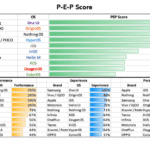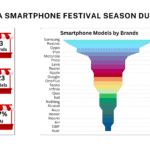“If your business is not a brand, it is a commodity.” – Donald Trump
Consumers don’t randomly purchase products or services; they buy because it’s the brand that has consumers’ trust. A brand is a bridge that connects the consumer with its product along with their trust in the brand. And if the brand fails to uphold the trust ‘setu’, the consumer’s outlook of the brand is lost forever.
In an era where the digitalization of products and services is growing at an exponential rate, a brand’s reputation is solely based on its ability to uphold consumer trust by protecting user data and establishing the digital trust ‘setu’. Today, brands are relying on technology to create unique and long-lasting experiences for users in the digital world and the users are willing to pay a premium for the trust they instate in the brand. A breach of trust and privacy in the digital realm dents that very core value of a brand- its relationship with its customers. Such issues callout for an extensive ‘hygiene’ check of customer experience by addressing cybersecurity issues.

Consumers and brands share a reciprocal relationship where the former shares personal information with the brand and the latter attempts to utilize that data to deliver a personalized experience in the digital world. A massive amount of data exchange that takes place (willingly or unwillingly), puts the brand in a harsh spotlight, more than ever, to protect this valuable data. With time, the volume and depth of data exchange have been massive: from storing credentials to knowing users’ favorite cuisine, from capturing day-to-day routines to granular details, brands know it all. Consumers entrust brand to safeguard their personal information from being misused.
Trust comes with the presence of security, both in brands and consumers’ minds alike. A robust cybersecurity infrastructure is no longer enough for people to trust a brand, but the absence is enough for people to disassociate from a brand. A sound cybersecurity infrastructure is part of a secured brand as the risks are not limited to financial loss but lead to misuse of personal information. Data breach not only hurts the brand financially and reputational loss, but it also equally hurts the customer whose information was misused.
Beyond ensuring a secured cybersecurity infrastructure, brands need to be vigilant of any infringement issues. Data is a brand’s asset, and if a scammer gets hold of this data, it can cause a serious reputational nightmare for the brand.
Brand Impersonation
Cybercriminals often impersonate a legit brand to steal credentials and personal information from consumers through phishing links. The information can then be exploited to commit financial fraud, and identity fraud, all the while consumers blaming the brand for the mishap. In other instances, data leaked/stolen from a brand will make it extremely easy for the scammer to impersonate and dupe consumers.
In a recent instance, a scammer got hold of a customer’s personal information from an employment-providing online platform. The scammer called the user on behalf of the brand and verified personal details to gain confidence. He convinced the victim to click on the link to get a refund for services provided by the brand. Within minutes, the victim was robbed off her bank account. The victim was convinced that the scammer was a real representative of the brand as he had access to all the information the consumer provided the brand while signing up for the job portal.
The ‘Social’ times that we live in today are testimony to such news spreading like wildfire in the digital world, causing severe damage to the brand and its reputation. Brands need to protect not just their data but customers’ data to uphold the trust ‘setu.’
Brands should deploy tools and solutions to monitor cases of impersonation, ranging from fake websites, fake customer care numbers, logo infringement, and other such issues. In today’s digital times, maintaining a brand ‘hygiene’ is the need of the hour to sustain and remain credible among the consumers.
Click here to read about Brand Safety in a D2C environment





